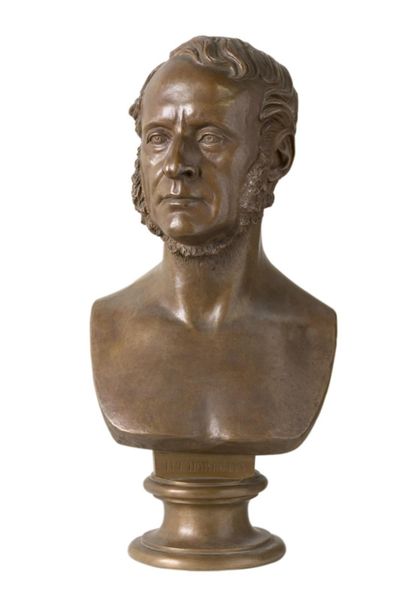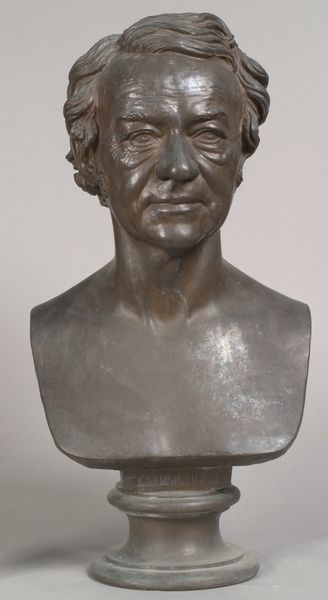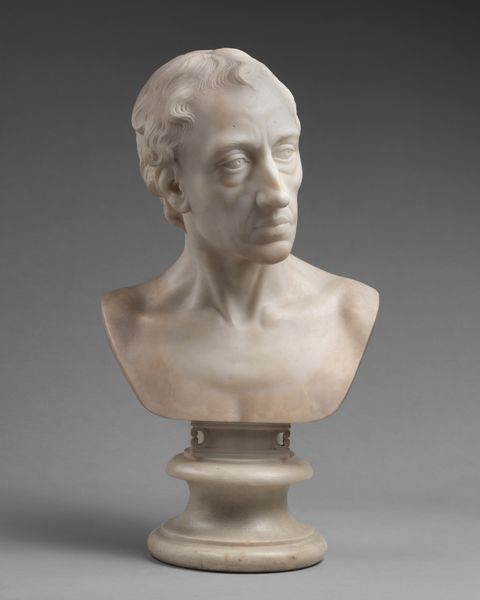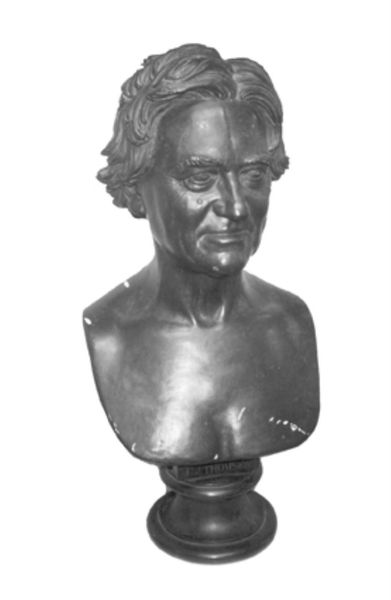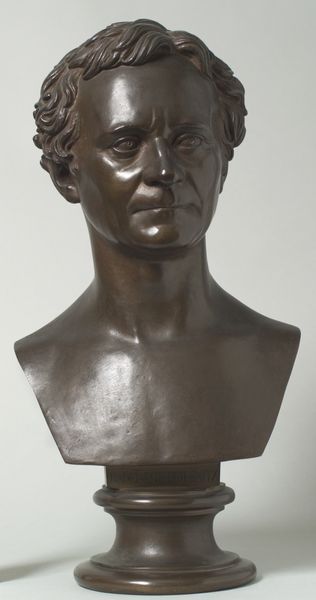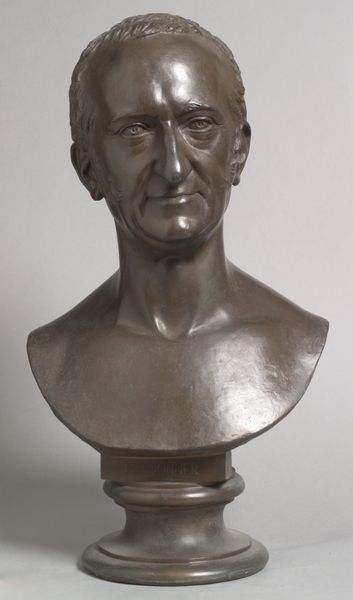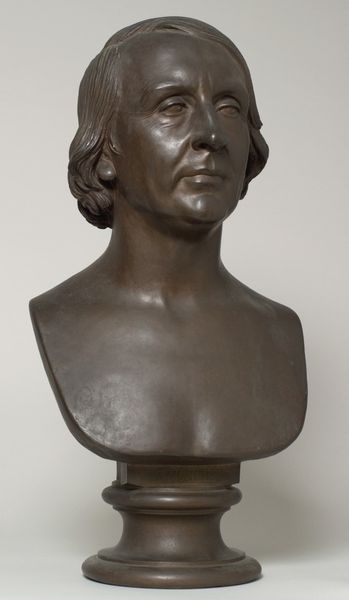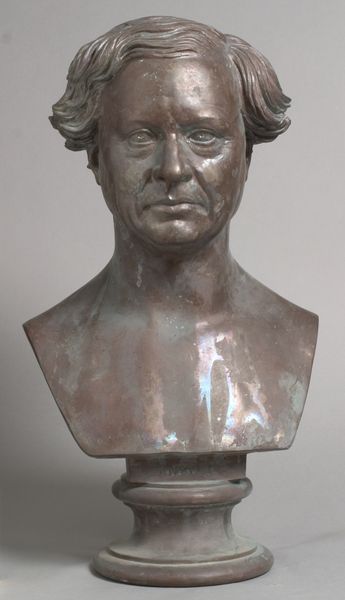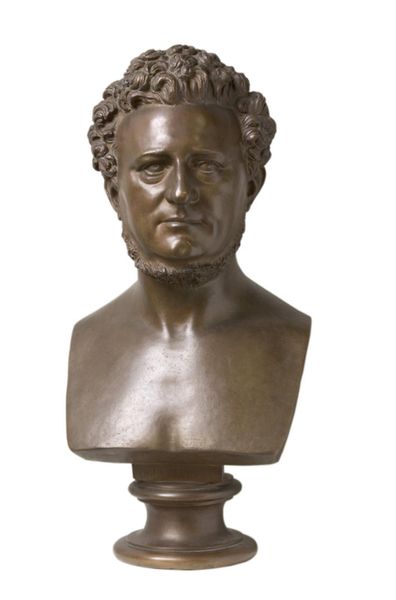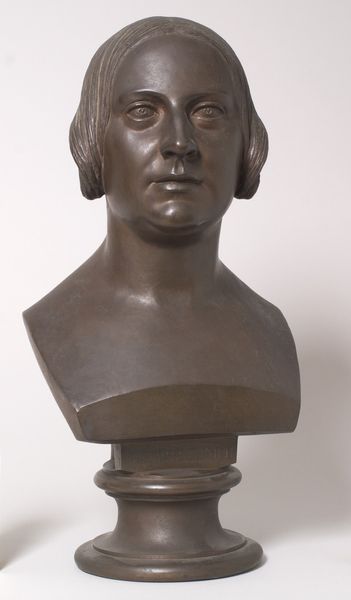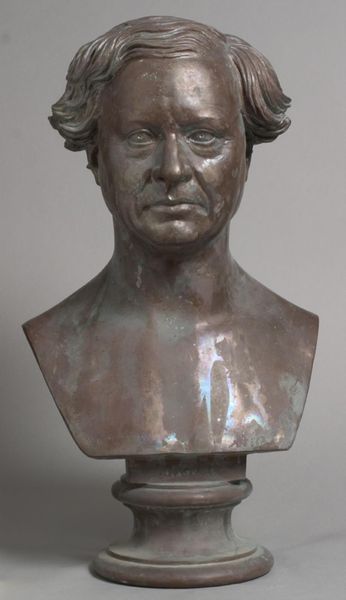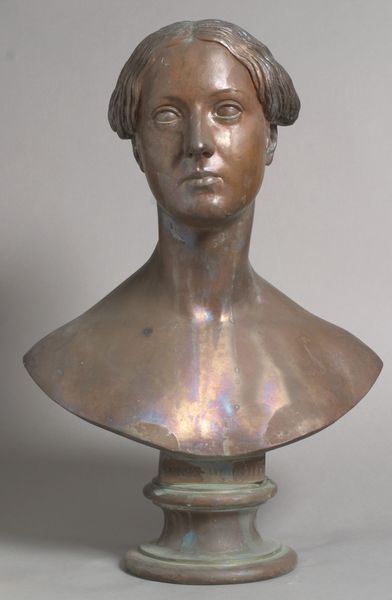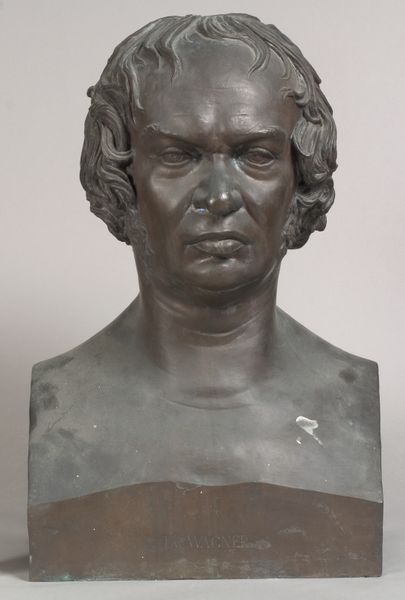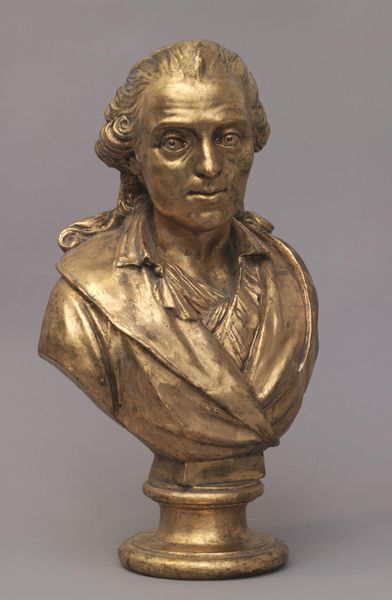
bronze, sculpture
#
portrait
#
neoclassicism
#
sculpture
#
bronze
#
sculpture
#
academic-art
#
statue
Dimensions: 63 cm (height) (Netto)
Curator: Here we have H.W. Bissen’s bronze sculpture, “Filologen, professor J.N. Madvig,” created in 1857. Editor: My first impression is… reserved. It’s formal, yet the subtle textures in the bronze make it feel quite human. There’s a palpable sense of authority, perhaps even stoicism, emanating from it. Curator: Indeed. Bissen was working within a strong tradition of neoclassical portraiture, influenced by figures like Thorvaldsen. The sculpture is, of course, a representation of Johan Nicolai Madvig, a prominent Danish philologist and classical scholar. Its context sits squarely within academic circles. Editor: And given Madvig's intellectual contributions, this work becomes interesting when considered within broader discussions about who gets to be memorialized and celebrated in public art. Who gets bronzed, so to speak, and why? Was this commission influenced by Madvig's contributions to national identity in a turbulent period of rising nationalism in Europe? Curator: Exactly. The institutional support for academic art during this period played a critical role. The Royal Danish Academy of Fine Arts shaped artistic production, setting standards and rewarding certain styles. There's a discourse about power structures at play. Academic standing determined which intellectuals were seen to represent particular notions of civic values. Editor: So, Bissen's work, while ostensibly a simple portrait, participates in that very power dynamic by granting Madvig this form of immortality and endorsing a very particular form of scholarship and social role. Do you feel the material itself, the choice of bronze, furthers that aim? Curator: Undeniably. Bronze conveys a sense of permanence and importance that aligns well with the desire to monumentalize figures deemed significant to society. It signifies value, both monetary and symbolic. These choices solidified his public role, especially as statues often end up in highly public spaces. Editor: Thinking about Madvig and considering the academic environment—how might we unpack contemporary interpretations? Today we recognize knowledge production as embedded within webs of power, gender, and race. The statue prompts necessary conversations, especially on thinking critically about these imposing representations of historical power structures. Curator: Precisely. Considering the reception history is critical. While in its own time, it might have been received as a straightforward celebration of academic excellence, today, it invites us to reflect on the societal structures it perpetuates. Editor: It reminds us of how objects evolve, constantly taking on new meaning depending on who looks at them and the socio-historical contexts through which they are viewed. It's a poignant reminder of the constant renegotiation between past, present, and future.
Comments
No comments
Be the first to comment and join the conversation on the ultimate creative platform.
